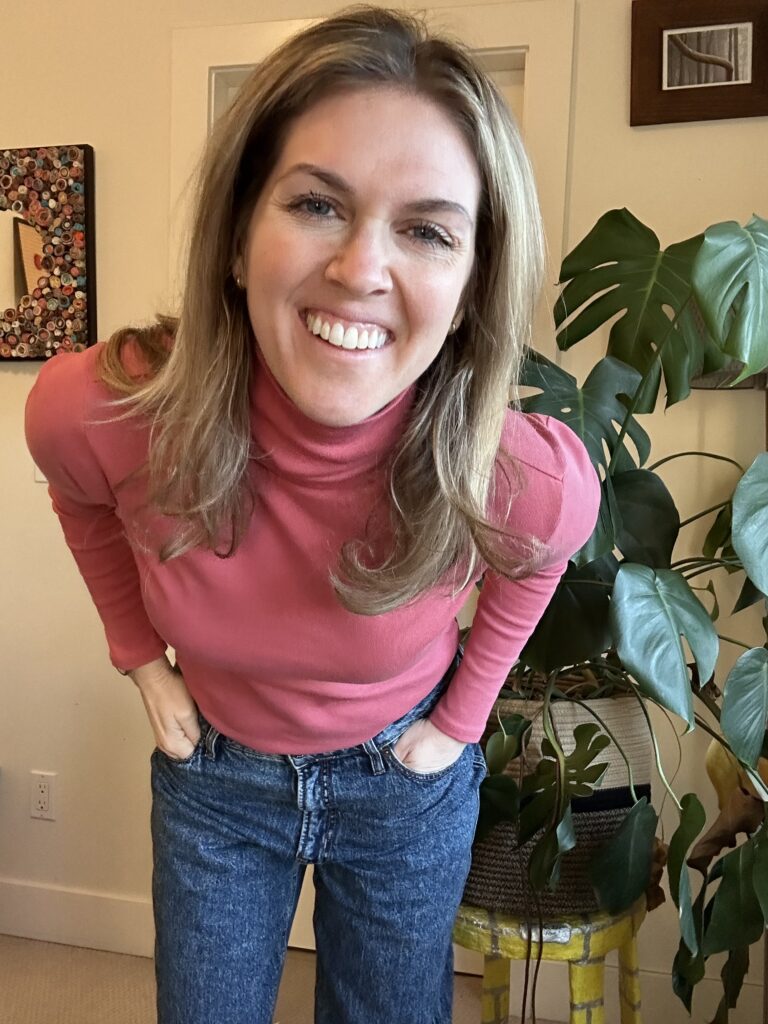You’ve made the decision to embark on your journey toward a baby with donor sperm, whether it’s your only option, a narrowed down option, or you’ve come to the decision over time. It might be because you have azoospermia or male sterility such as an unsuccessful vasectomy reversal, be a LGBQT+ couple, be a hopeful single mom by choice or for another reason.
Either way, this is a milestone. It might come with mixed emotions, pure excitement, fear or all the feels. Move forward gently.
This is a journey with oodles of love and it’s normal if you forget that at some steps.
The next milestone may be choosing who to be the donor.
Let’s get into it.
Deciding on the relationship (or lack of) with your sperm donor
Choosing donor sperm means someone else is involved on your fertility journey, even if it’s very minimally. It’s an extremely personal decision about who to choose to have as half the genetics of your child and in some cases, have some involvement in your child’s upbringing or have as a potential future relationship.
As we’re in this step of the process, consider thinking through the perspective of your future donor-conceived child or children. It’s about you and it’s about them and how they might want to explore their other genetic side eventually. It may be that you do want to have offer a relationship of some kind or just for them to have knowledge of their sperm donor. Then there’s also the option to see if it works to have the ‘bio-dad‘ actively involved in some way, or something in-between.

Regardless, being open to the child knowing who they are when they’re a certain age (e.g. 18 years old) or completely anonymous has an impact. It closes options for your donor conceived children to find them (except with 23 and Me and other services, less tricky), but it’s a very personal decision for you.
Make sure to check to see your options in your jurisdiction to prevent wasted time (and potentially money). Some of these options may not be available to you. More and more jurisdictions are ruling out the possibility of anonymous sperm donation because it closes off possibilities for the future donor-conceived children like I mentioned above.
Then there’s the more involved option where the bio-dad or sperm donor commits to yearly visits, or maybe write letters every once in a while or something that suits your family. This is all worked out in a discussion and later added to a legal document (I’ll get into that later in this article).
If you’re a hopeful single mom, you might be thinking about intentionally using donor sperm that others around you use so that they grow up with their half siblings – called their dibbling (donor + siblings). This comes up in many situations, not just for single parents. Here is a global registry for that, Donor Sibling Registry.
If you already have bio children or child or step child already, this might impact your decision.
Book a call with me if you want support with this. This is a weighty decision and only have a few paragraphs dedicated to this decision doesn’t do it justice, for some people.
How to find a sperm donor

You’ve narrowed down options based on your decisions above about how that relationship looks like whether it’s nothing (anonymous), more hands-on or in-between. This might impact your next decision.
Remember, this is not necessarily a linear decision either.
But there are two options when it comes to finding a donor. Either you haven’t met them yet or might never meet or you choose a known sperm donor who you know now or are open to thinking about asking someone in your wider social network who you will meet.
This is where you choose specifically who.
Here are 3 options.
- Purchase from a sperm bank.
- Ask someone you already know.
- Search for someone in your current network or virtually.
Using a sperm bank
Using a sperm bank can provide you with a lot of choice. Sperm banks have a lot of information about the donor and you’ll filter it down based on how open you want (Open ID or ID-Release) or anonymous where you want them to remain out of yours and your child’s life forever. That being said, with ancestry and DNA tests so common these days, anonymity is almost impossible. You’ll also be reading about the potential donor’s occupation and occupations of their parents, education, physical characteristics, health, likes and values, voice, character reference, and pictures among other factors. Getting to know the sperm donor in person or virtually may be part of the decision making process, so they can potentially become a known donor, technically. It can take a while and what adds to the challenge is a donor’s sperm can come on the market and be scooped up quickly and run out, so sometimes you have to act fast. You’ll also be deciding how many vials to purchase, how many other pregnancies from that donor and how you plan to fertilize. Book a coaching session with me if you want support with this process.
Donor sperm from someone you (or your partner) already know
This can be clear, you know who to ask. It might be a relative so there’s a connection by blood or within your partner’s wider family tree (or yours if you’re not blood related to your family tree) if you’re using your eggs. You can ask directly in a proposal by having them over for a meal, then giving them time to decide. A deadline is helpful. Other ways to find them if you don’t know yet is make a social media post if you’re comfortable, or use word of mouth within your network of friends and coworkers to find out candidates and start the process of finding who is the best fit. It can be a journey.

Apps and sites to find a sperm donor
Donors can be found through apps these days because we’re living in the age of apps. Here are a few:
There are differences among them in terms of fees or whether they’re free, which is mainly about how much you can post, whether it’s long (fee) or short form (free).
Lots of the same people are in these apps so there is redundancy. Once you’ve opened one you tend to find the same people elsewhere (just like how those 2 sentences were redundant).
Signing the legal agreement with your donor
This isn’t usually applicable if you’re picking sperm from a sperm bank, but if you’re choosing a known donor then it’s time to ink a legal agreement for them to review and sign. You’ll want a lawyer who has experience in fertility and family law.
But I’m getting a bit ahead of myself. Let me back up a bit. If you’re choosing a known sperm donor then there’s a lot to consider. There are jurisdictions where there’s a concern that the bio-dad could ask a judge for custody one day, so we start off with the legal aspect, even though it might seem daughnting when there’s no actual pregnancy or baby in the picture yet. But it’s especially important to have this thought through before trying to conceive and not after. The biggest concern is usually about custody eventually. Usually it won’t fly if you are considered the mom or moms, but it’s a concern. Check your local laws and discuss with your fertility and family lawyer who has knowledge about your specific jurisdiction.
The fees that a donor can accept differ by jurisdiction. In Canada, there are many restrictions and they differ by province and territory, but you The Assisted Human Reproduction Act prevents you from paying your donor for the sperm. It has to be altruistic, but there are ways to reimburse the donor for other adjacent expenses.
Speaking of financials, if there is any sort of relationship between the future child and donor (or even if they’re not) there might be some sort of monthly or annual fee schedule worked out in the legal agreement.
Managing the fertilization and transfer process
Once you have who, then it’s the how.
If you’re using a sperm bank. With this route, you either order the sperm yourself and have it shipped to your fertility clinic or your fertility clinic does the coordination to ship it and handle the intake process. Ask your clinic about your options. If you don’t like the options at your clinic or you don’t have one yet there are many considerations to decide which clinic is best for you. You can always change clinics.
Another option, depending on the laws in your jurisdiction, is to have the sperm shipped directly to your home. The sperm bank provides instructions on what to do, but also see below about at-home artificial insemination.

If you’re using a known donor.
- Work with a fertility clinic. This option gives you much more assurance that the health of the donor and the sperm can be more rigorously tested so that you have more peace of mind that you’re making the right choice for your potential future child and for the health of the gestational carrier or you/your partner. The downside is this can take months to have the sperm thoroughly tested and ready to be used. Also, the only options are IUI or if you’ve frozen your eggs and thawing them or doing IVF with fresh eggs or future frozen eggs then you’ll be working with the clinic and their embryology team. Another option is InvoCell, a cross between IUI and IVF. Cost and whether your have coverage might play into this. The other advantage of a clinic is they can wash the sperm and pick the best and provide expert medical expertise from a Reproductive Endocrinologist. This might be your only option in some cases, especially if there are concerns with eggs or gestation.
- At home artificial insemination. This could be with a period cup (e.g. Diva Cup), Mosie baby or turkey baster-like device like a syringe. Again, have the discussion content and agreement signed ahead of time ideally if this a a known donor. There are more health risks this way, but it is a lot cheaper to not have a fertility clinic or healthcare provider perform the IUI. You might want to have the sperm donor have a sperm analysis before trying this and other out of pocket expenses, but this is a lot less than working with a doctor or clinic. If you’re using sperm from a sperm bank, you have much more peace of mind.
- Have intercourse with the donor. This might make you cringe and say, ‘Hard pass!!!’ and I get it. This is a less common route, but either with the bio-dad‘s sperm donor’s knowledge or by accident, this happens. If you do choose this route for conception then have that discussion first with the donor and make sure to draw up an agreement for them to sign before intercourse and not afterwards. Check your local laws because this isn’t always binding. There are of course many ethical and legal implications if you do choose this route without the donor’s knowledge. Accidents happen too. Again, this is more rare but I’m trying to be thorough. This is different than choosing an intentional co-parent.
Ensuring legal parentage
Using donor sperm can get tricky about the rights in some jurisdictions (and blatantly discriminatory in others). What I’m talking about here is if you are a lesbian couple or in another LGBQT+ type of relationship or scenario and you want to make sure that you’re both legal guardians to your child. You might have legal or bureaucratic steps to take. Have this discussion and look into the options in your jurisdiction. It’s better to be thorough than to put it off and face any potential heartache and legal battle later.
There are many more decisions to make in this process and it’s important to do this your way that’s uniquely you. I’m here, so book a free 30 min session by phone or Zoom if you want to be coached to find that route and to get expert advice.
I hope your journey to expand your family is full of all the love and warmth that you deserve and have to give.

More about:
